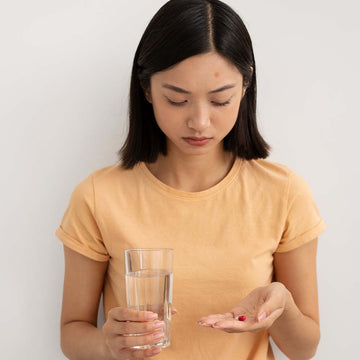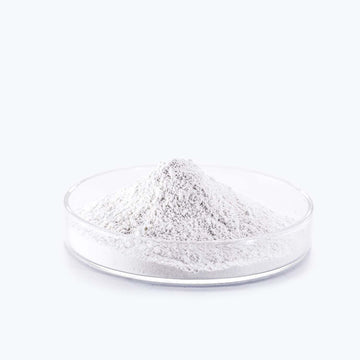In the perpetual quest for radiant and flawless skin, the term "acne spot corrector" stands as a testament to advanced skincare. At Acne-X Topical, we recognize the pivotal role this revolutionary product plays in addressing stubborn blemishes and scars. Join us as we unravel the mysteries of acne spot correctors in this comprehensive guide, offering insights that transcend the ordinary.
What Are Acne Spot Correctors
An acne spot corrector is a specialized skincare solution meticulously crafted to target specific imperfections like post-acne marks, dark spots, and hyperpigmentation. Far surpassing the capabilities of generic skincare products, these correctors boast precision, delivering potent ingredients exclusively to areas in need of correction.
Essential Key Ingredients Revealed
1.Salicylic Acid
It is one of the most popular acne spot correctors. It penetrates deep into the pores, blocking them and preventing breakouts. Salicylic Acid’s exfoliating action further reduces the appearance of blemishes over time.
2.Hyaluronic Acid
Essential for maintaining hydration during the correction process, Hyaluronic Acid rejuvenates moisture levels. This ensures a plump and youthful complexion, complementing the corrective actions of other ingredients.
3.Retinol
Renowned for its skin-renewing attributes, Retinol takes a prime position in effective spot correctors. By accelerating cell turnover, it actively contributes to the attenuation of acne scars, revealing smoother skin over time.
4.Benzoyl Peroxide
An effective topical treatment for acne, benzoyl peroxide boasts potent antibacterial properties, eliminating Propionibacterium acnes (P. acnes) bacteria, a major cause of acne. Its unique ability to introduce oxygen into low-oxygen environments makes it especially effective against anaerobic bacteria.
5.Colloidal Sulphur
A powerful ingredient for treating acne, Colloidal Sulphur inhibits the growth of acne-causing bacteria and reduces inflammation, contributing to an effective spot correction process.
6.Berberine
A natural antibiotic, Berberine exhibits antimicrobial properties, reducing the number of Propionibacteria that contribute to acne. Its inclusion enhances the overall efficacy of spot correctors.The Power of Spot Treatments
Spot treatments are not merely an overnight solution for blemishes; they can be seamlessly integrated into your daily skincare routine, contributing to faster healing and preventing scarring. The key lies in understanding the right way to use them.
1.The Right Order
One common mistake is applying spot treatment at the end of your routine. This reduces its effectiveness as it needs to penetrate through layers of other products. The optimal order is to apply spot treatment right after your light, water-based serums and before your moisturizer. This ensures that acne-fighting ingredients penetrate properly without hindrance.
2.The Right Ingredients
Choosing the right ingredients is crucial for an effective skincare routine.Here are some widely popular ingredients in spot treatments like benzoyl peroxide and salicylic acid. However, it's essential to be mindful of potency, especially for sensitive skin. Opt for gentler alternatives like niacinamide to avoid adverse reactions. Always check the ingredient list of your chosen product.
3.The Right Time
Consider your entire skincare routine when deciding on the right time for spot treatment. Nighttime is often preferable as the body is in repair mode, aiding in faster zit drying. However, if you're using a retinol-based serum at night, opt for morning spot treatment to avoid potential skin irritation from mixing incompatible ingredients.
4.The Right Technique
Regardless of the texture of your spot treatment, the application technique remains consistent. Use a clean finger to dab the product onto the affected area. Allow at least 60 seconds for it to dry completely before applying moisturizer around the treated area. Finish by gently dabbing a bit of moisturizer on the spot to lock in moisture.
5.The Right Frequency
While the temptation may be to reapply spot treatments as soon as they dry out, it's crucial to exercise restraint. Overusing spot treatments can lead to excessive dryness, causing flakiness and patchiness. Follow your dermatologist's guidance and use spot treatments only 1-2 times, as directed, to avoid potential harm to your skin.To know more click here.
Frequently Asked Questions (FAQs)
1. What is an acne spot corrector, and how does it differ from generic skincare products?
An acne spot corrector is a specialized skincare solution designed to target specific imperfections like post-acne marks, dark spots, and hyperpigmentation. It differs from generic skincare products by offering precision, delivering potent ingredients exclusively to areas in need of correction.
2. What are the essential key ingredients found in acne spot correctors, and how do they contribute to the correction process?
Essential key ingredients in acne spot correctors include Salicylic Acid, Hyaluronic Acid, Retinol, Benzoyl Peroxide, Colloidal Sulphur, and Berberine. They contribute to the correction process by addressing blemishes, maintaining hydration, accelerating cell turnover, and inhibiting acne-causing bacteria.
3. Why is Salicylic Acid considered one of the most popular ingredients in acne spot correctors?
Salicylic Acid is popular due to its ability to penetrate deep into pores, unclogging them, and preventing breakouts. Its exfoliating properties further reduce the appearance of blemishes over time.
4. How does Hyaluronic Acid maintain hydration during the spot correction process, and why is it crucial for a youthful complexion?
Hyaluronic Acid rejuvenates moisture levels during spot correction, ensuring a plump and youthful complexion. It complements the actions of other ingredients by providing essential hydration.
5. What role does Retinol play in effective spot correctors, and how does it contribute to smoother skin?
Retinol, known for its skin-renewing attributes, accelerates cell turnover in effective spot correctors. This contributes to the attenuation of acne scars, revealing smoother skin over time.
6. Can you explain the antibacterial properties of Benzoyl Peroxide and its effectiveness against acne-causing bacteria?Benzoyl Peroxide has potent antibacterial properties that eliminate Propionibacterium acnes (P. acnes) bacteria, a major cause of acne. Its ability to introduce oxygen into low-oxygen environments enhances its effectiveness against anaerobic bacteria.
7. How does Colloidal Sulphur inhibit the growth of acne-causing bacteria, and what benefits does it offer in spot correction?Colloidal Sulphur inhibits the growth of acne-causing bacteria and reduces inflammation, contributing to an effective spot correction process. It offers benefits in addressing acne-related issues.
8. What is the significance of Berberine in spot correctors, and how does it enhance their overall efficacy?Berberine, a natural antibiotic, exhibits antimicrobial properties, reducing the number of Propionibacteria that contribute to acne. Its inclusion enhances the overall efficacy of spot correctors.
9. Why are spot treatments not just an overnight solution, and how can they be integrated into a daily skincare routine?Spot treatments are not merely an overnight solution; they can be seamlessly integrated into a daily skincare routine for faster healing and preventing scarring. This integration contributes to long-term skincare benefits.
10. What is the right order of applying spot treatments in a skincare routine, and why is it essential for their effectiveness?
The right order of applying spot treatments is right after light, water-based serums and before moisturizer. This ensures that acne-fighting ingredients penetrate properly without hindrance, maximizing their effectiveness.





